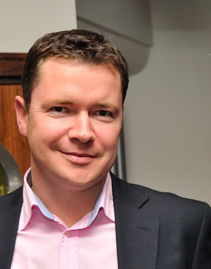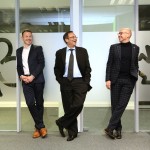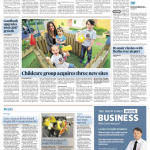In this week’s Ask-a-Journalist we interviewed Stephen Conmy, a journalist who specialises in issues around PR and marketing. As editor of Irish Marketing Journal (IMJ) and now Digital Times, Stephen has a birds eye view of how both PR and marketing have changed with the onset of digital media, as well as an eye on the future of where marketing communications is going.

Digital Times Editor Stephen Conmy
As an editor covering marketing issues for some time, what changes in the sector have most astounded you?
The most astonishing thing has been the rate of change, the sheer pace, of the digital age. I think the last three years have seen the greatest transformation in international media ever witnessed and with advancements in mobile, real time, searchable, socially-connected devices we are in for a hell of a ride over the next few years.
How well do you think the Irish marketing sector is adapting to an increasingly divergent and fragmented media?
Quite well in fact. I think PR especially was very quick to embrace social media and the digital age. PR’s strengths lie in communication and that’s what the digital age is all about, immediate, real time communication with real people – real consumers.
Perhaps ad agencies have been slower. I recently had a meeting with a mid-sized agency and the MD said: ‘Why would I bother with a digital campaign, I can do a leaflet drop to over 500,000 homes for the same money?’
I think that sums up what’s wrong with many agencies and you can’t really blame them. The ground has been ripped from under them. Digital simply won’t make the same returns for an agency as a big, juicy TV campaign. Outdoor is easy and effective. Radio is good value and effective. Print hits huge numbers and offers great opportunities for the creatives to shine. All these forms of advertising remain effective. Clients understand the traditional stuff.
However, to say that Irish marketing isn’t adapting to a fragmenting media landscape would be disingenuous. Everyone knows where the consumers are going. Now is the time to follow them and for the industry to agree on standards that make the digital marketing economy viable.
Setting up a print magazine on digital marketing at a time when traditional marketing is more strained than it has been in years may seem like a risky venture. Why is now the time for Digital Times?
We want to create a magazine that people want to read. Print is risky. But … “You’ll always miss 100% of the shots you don’t take”. We offer a very targeted, influential readership and our media space is great value. Anyone want to meet for coffee for the full pitch?
Do you think traditional marketing media cover developments in digital media adequately? What differs Digital Times from its competitors?
I think we can be much more surgical about the trends as they appear. I think we have a different energy. We also cover digital media, culture, business, ideas, creativity and innovation, so we have lots to write about and many interesting people to interview. It’s such an interesting industry.
Can you give five predictions on what developments you envisage coming to prominence in digital marketing this year?
More investment by brands; more investment by online publishers; better digital creativity by agencies; more real-time, mobile, location-based campaigns; and less digital conferences.
Producing a magazine that presents coverage opportunities for PR agencies themselves must be like waving a red flag in front of a bull. What advice can you give PR agencies seeking to be covered by Digital Times in terms of what interests you and what your preferred approach is?
We want to hear from all sectors of Irish media and marketing. We want to hear about developments in agencies as well as from the client side. We’d like to hear about account wins, appointments, account moves, sponsorship deals, social media initiatives, campaigns, PR projects … we want to hear it all by golly. Be concise, be factual, don’t use too many adjectives and attach a high res. jpg.
How good do you think the PR industry is at doing PR for itself?
I think it should stand up for itself more, it is a very important link in the media loop.





